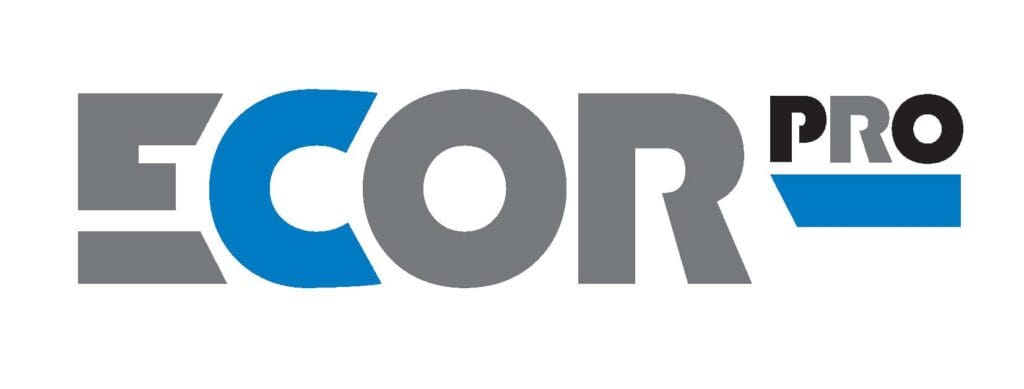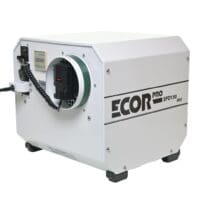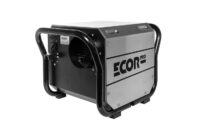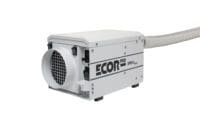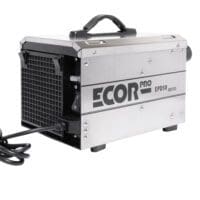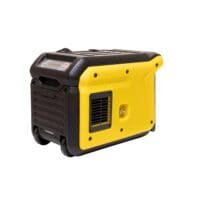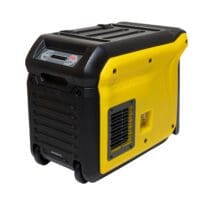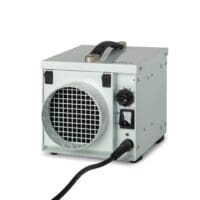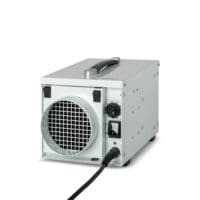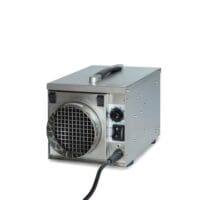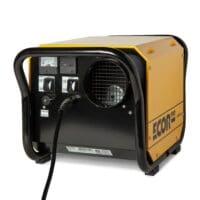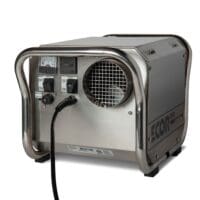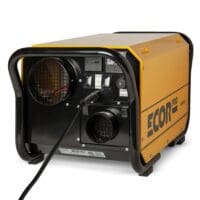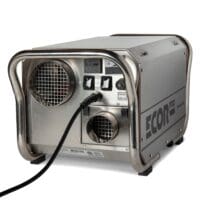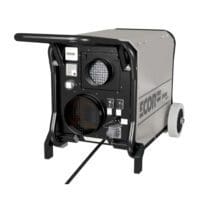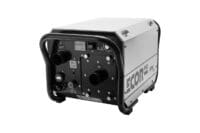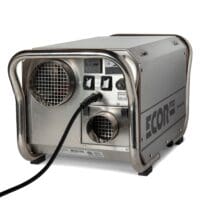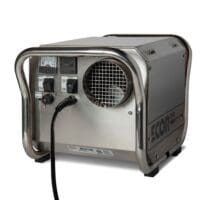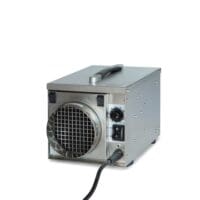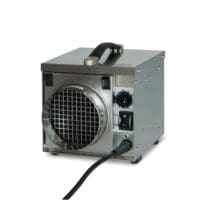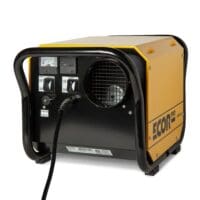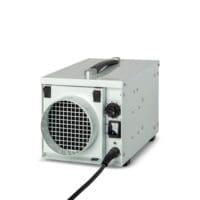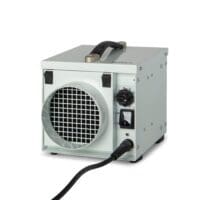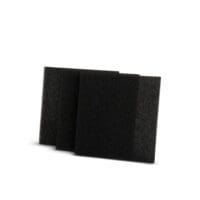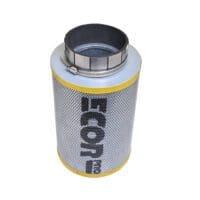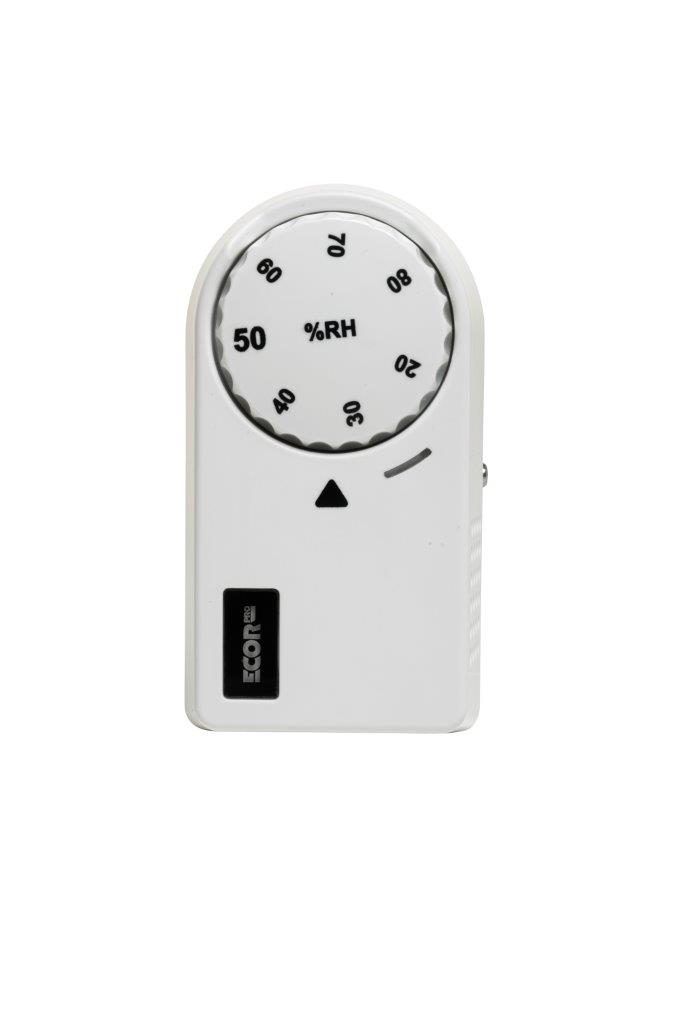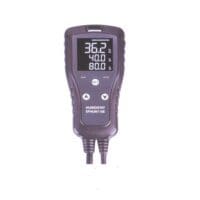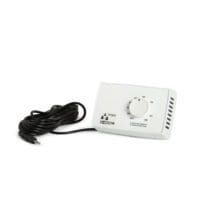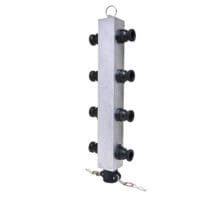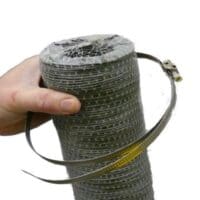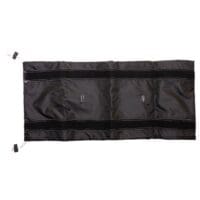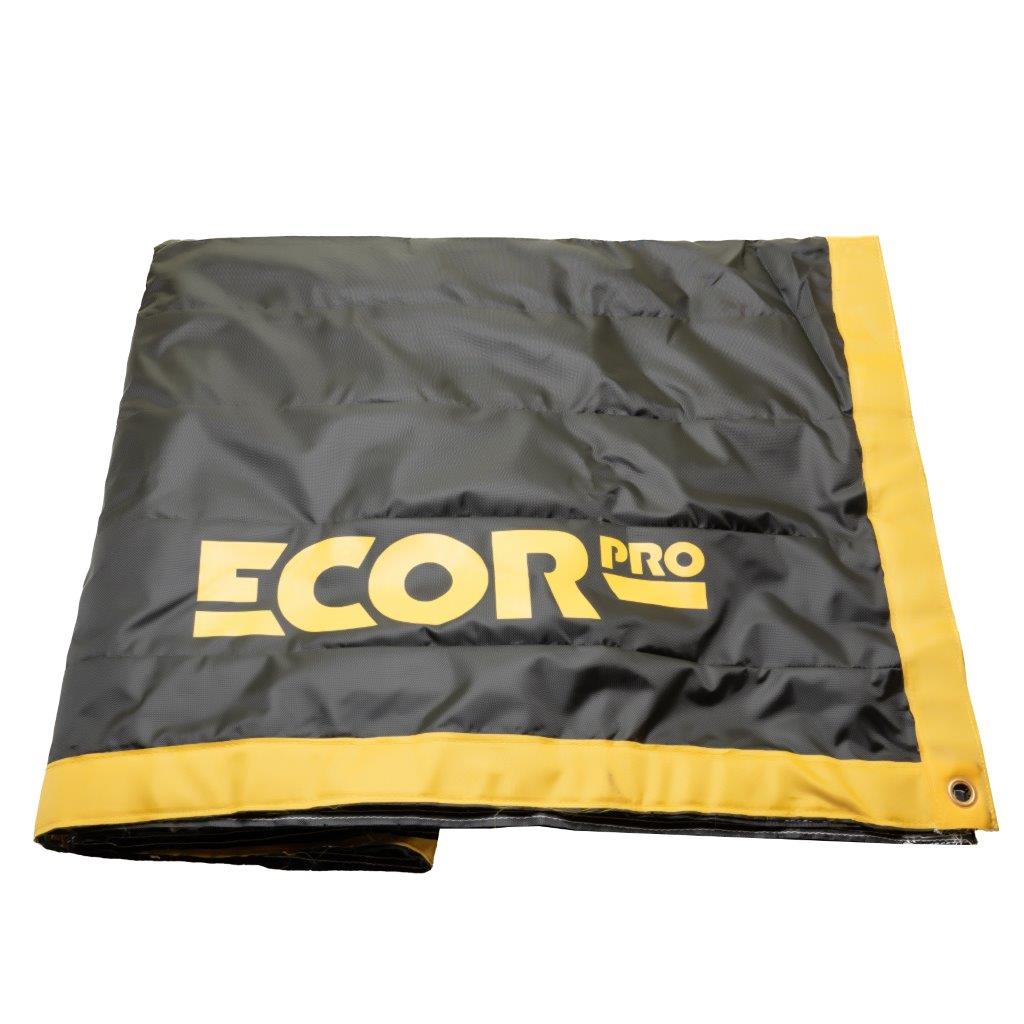How to buy the best home dehumidifier
Desiccant, Refrigerant or other technology?
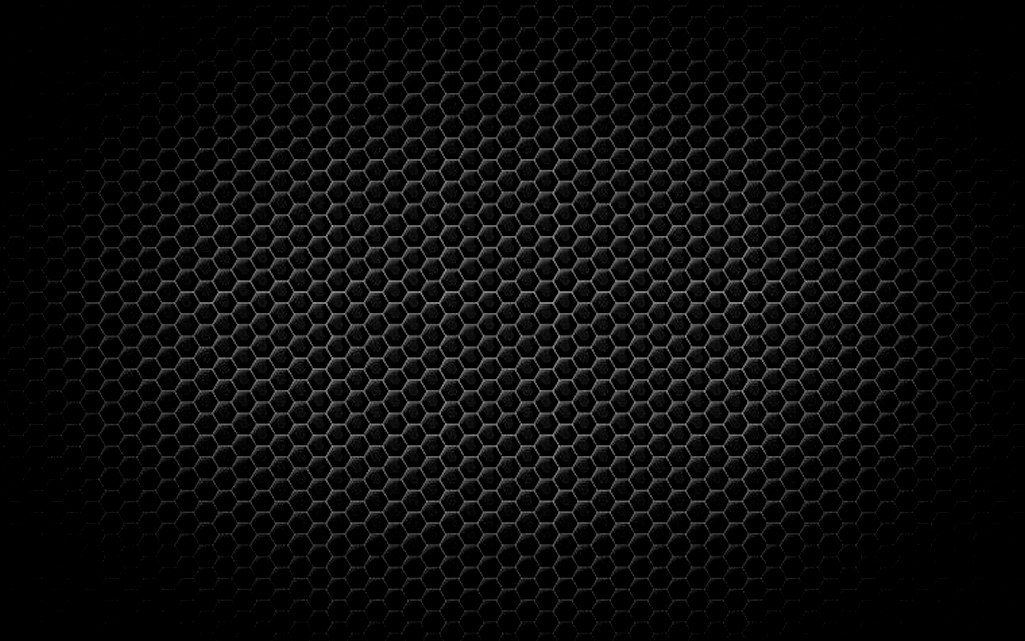
Looking for the best dehumidifier to help tackle condensation, damp and mould?
If you’re noticing water stains on your walls or ceiling, condensation on your windows, mould spores lurking in your shower or a general musty smell, it’s time to buy a dehumidifier.
If you are in doubt see here
Whether you need a refrigerant (compressor) or desiccant dehumidifier will depend on application . If the dehumidifier is to be used all day and every day unattended you will need a commercial grade dehumidifier. The cost of commercial grade dehumidifiers used to be out budget reach of most home owners but not anymore.
How big a unit will you need for the home?
A dehumidifier’s size or capacity describes how many litres or pints of water it’s able to extract from the air each day, rather than its physical size or the capacity of its water tank. It is true that dehumidifiers with a larger extraction rates are usually physically larger and have larger water tanks than small capacity dehumidifiers. That is the general rule but desiccant dehumidifiers buck that trend a little.
The best-sized dehumidifier for your needs depends on the size of the space you want to use it in, how much time you have to dry, the temperature conditions and how much moisture is being generated in that space.
The rule of thumb of for compressor units is 1 litre of water extraction for every 10m2 of floor space (around 2 pints of quoted maximum water extraction for every 100 sqf).
For a desiccant the rule is a little different as they extract water more evenly over different temperatures and do not rely on high temperatures. Therefore, realistically 1 litre of water extraction for every 20m2 (around 1 pint of quoted maximum water extraction for every 100sft)
See more on sizing here
Larger units will be needed if the property is on one level not two, more people are in the dwelling than average and other considerations like home proximity to water or the coast. For example, If the property has a conservatory or a large amount of glass in the dwelling, then the dehumidifier will often need to be larger than the rule of thumb.
Ecor Pro units can circulate air with turbo fans as a standalone dehumidifiers but also can have ducting added to draw air in from difference areas in the space or home to dry air more effectively.
Refrigerant Dehumidifier or Desiccant Dehumidifier?
Refrigeration technology has been around for the past 150 years while desiccant is a fairly modern at only 50 years with the first stand alone dehumidifiers around only 30 years ago.
The cost of desiccant was largely prohibitive for most applications until the last 10 years when certain restrictions were lifted & the popularity of desiccants allowed the prices to fall to the point where they are more affordable for domestic and home applications.
Desiccants have been slower to catch on for another reason and that is how the models are compared on performance to compressor dehumidifiers. Moreover, what is their maximum performance and whether that is a true reflection of the different technology’s ability to combat the moisture problems in the homes.
In the past 6 Years Ecor Pro has focused all dehumidifier development on Desiccant dehumidifiers reflecting the importance we see in this desiccant technology going in to the future.
How Does a Refrigerant or Compressor Dehumidifiers Work?
A refrigerant dehumidifier works in the same way as you would expect as the common refrigerator in the kitchen of the home: the home refrigerator has usually the back inner wall relatively cold and the outside black grill relatively warm.
That cold back wall contains a cold refrigeration coil, the system transfers heat from inside to outside by the refrigerant gas powered by an electric compressor. Often this is a small dome shaped object at the back of the appliance. This cool surface principle can be used as a condensing surface for moisture when used in a dehumidifier: imagine no back wall in a home refrigerator just the warm and cold refrigeration coils next to each other. If air passed through the refrigerator from the door opening in such an imaginary refrigerator, the air would happen upon the cold refrigeration coil surface. As air touches the cold coil the air becomes denser and then may give up its moisture onto the cold coil.
In addition, that moisture can be made to drip down the cold coil and collected underneath to be drained away to the outside or into a water container.
As the air passes the cold coil and happens onto the warm coil it will be reheated. Leaving the warm coil the air is slightly warmer and dryer.
Furthermore, a big issue is the surface area of the coils. Air must pass through but as much of the air as possible must come in contact with the coils in order for the dehumidifier to be as efficient as possible. Not found on refrigerators as fins added to the coils to increase the surface area.
All Ecor Pro compressor dehumidifiers used finned coils
If the dehumidifier is to be used all day and every day or especially if the dehumidifier is to be used unattended, we always recommend using commercial grade dehumidifiers for the applications
Differences in Compressors in Refrigerant Dehumidifiers
In a home refrigerator the usual black domed compressor at the back of the refrigerator is called a “reciprocating compressor”. These refrigerator compressors are still used in some older dehumidifier designs. In more modern dehumidifiers “rotary compressors” are used. These rotary compressors are used in air conditioning systems mostly.
The reciprocating compressor works similar to a car engine and the up and down motion of the piston can be noisy. The internal piston noise makes a deeper sound that can be heard often through the home as indeed a refrigerator can.
A rotary compressor uses a rotary piston. This generally is quieter and also tends to be smaller in size allowing he dehumidifier to be more compact.
All Ecor Pro refrigerant dehumidifiers that are compressor based use rotary compressors.
How long does a refrigeration dehumidifier last?
Large refrigerant dehumidifiers if not moved can last a long period of time with correct maintenance. The dehumidifiers may need topping with refrigeration gas at regular intervals usually every few years by a qualified refrigeration engineer. If your dehumidifier starts to blow hot air and not extract water shut it down immediately as this is a common sign of lack of refrigerant in the system.
Smaller home refrigerant dehumidifiers are susceptible to gas leaks as they are portable and pipes internally can crack as the dehumidifiers are transported. These cracked pipes leak the refrigerant gas and the repair of these home units is often complex and almost the cost of a new replacement unit.
How long does a desiccant dehumidifier last?
Regular cleaning of air filters will both improve efficiency of any dehumidifier and also prolong the lifetime of any dehumidifier.
A desiccant or adsorption unit will only need the internal desiccant wheel replaced about every 4-5 years to maintain efficiency. They will continue to try but is estimated that the wheel will have 80-90% efficiency after this time.
Often commercial desiccant dehumidifiers have their wheels cleaned periodically with compressed air which is easy to do to maintain efficiency. Having far fewer parts to go wrong, desiccant dehumidifiers are generally more reliable than refrigerant units especially when they are commercial grade.
All Ecor Pro desiccant dehumidifiers are commercial grade.
How Does a Desiccant or Absorption Dehumidifier Work?
Imagine a wheel made up of rolled corrugated cardboard, the flutes then run parallel to the axis of the wheel allowing a free flow of air and giving the wheel a high surface area.
This is the shape of the sub straight that is then impregnated with zeolite;: a product that has an usual property. Zeolite absorbs moisture at normal temperatures even below freezing temperatures but gives up this moisture when heat is applied. You have seen it in small sachets when you buy fine leather goods, cameras or other electronics.
The Zeolite can be regenerated over an over with a warm air stream, similar to that of a hair dryer.
If the wheel described above is rotated slowly, air we want to dry made to pass through it and part of the wheel having a warm hair stream to purge it of moisture, we have an effective and continuous drying system. If we exhaust that hot and now very humid air to the outside space we have dried the room or rather moved the moisture from one place to another as a vapour.
This drying of the wheel with warm air is often termed as a “purge” of the moisture
The heating of this purge air in units that are not commercial grade are often just wire wound heaters like you would find on an old electric fire. This is why that none commercial desiccant dehumidifiers should only be used in attendance. If there is a mechanical fault, the standard desiccant dehumidifier can overheat with disastrous consequences.
All Ecor Pro desiccant dehumidifiers use high grade components including Positive temperature coefficient (PTC) heaters which can not overheat.
A PTC heater is a self-regulating heater which strives to keep a constant temperature regardless of how the ambient conditions change. It is the material in the heater itself that regulates the temperature so if there is a fault the heater can not overheat.
Hear the full explanation here on slide 10
Why is The Water Tank Small on Normal Home Refrigerant Dehumidifiers?
When you buy the dehumidifier the water extraction quoted in the main is usually the maximum water extraction in 24 hours. This maximum will be a factor of the temperature the unit was tested in and the humidity of the air. Of course the maximum is taken at maximum temperature and maximum humidity to give the maximum quoted water extraction result. This maximum amount of water is often many times greater than the volume capacity of the water container inside the unit itself. The water tank however is usually designed for the amount of water the dehumidifier will extract in a typical 24 hour period so is a good rule of thumb of actual performance of the machine.
Do I need a special filter or ioniser?
Some brands of home dehumidifiers have ionisers however the impact of such ionisers is minimal in dehumidifiers generally
Specialised filters quoted by many brands are often ineffective. Too small to filter small particles needed to make an impact in general. The primary objective of the dehumidifier filter is to ensure the effective running of the internal workings of the dehumidifier itself.
All Ecor Pro filters should generally last the life of the dehumidifier with careful cleaning. The exception to this is the powerful LD800 dehumidifier that has a large “HEPA Type” filter inside.
The bigger the box the better the product?
Generally that is not true. Often bigger boxes have more space. The size of a dehumidifier has real disadvantages as they take up storage space when not being used and traditional dehumidifiers take up floor space when they are being used in the living areas.
Ecor Pro DryFan dehumidifiers were designed to work out of sight saving floor space, less obtrusive and give a positive feeling to the home’s air rather than also an unwelcome eyesore to look at while it works.
How much do dehumidifiers cost?
Dehumidifiers consume electricity at the cost of the supplier. The cost of running an appliance is directly related to the number of Watts consumed. However the efficiency of the dehumidifier is the prime consideration.
A dehumidifier only regulates the humidity to the set point then will stop working by way of its humidistat setting. As the dehumidifiers stop working they will use only standby power which is typically only a few Watts of electricity and very little cost.
The power consumption of the dehumidifier should not be taken as absolute as to the cost of running the dehumidifier. After all the efficiency of the dehumidifier should also be considered as should the technology employed.
In term of energy efficiency a desiccant unit will use around the same amount of energy as a refrigerant dehumidifier in terms of the number of watts. However, in real terms, desiccant dehumidifiers will extract more water at normal temperatures making them typically more efficient.
The good news is, you probably don’t need to worry too much about a dehumidifier adding enormously to your energy bills. Dry air feels warmer than moist air so less heating is needed. It is often said the cost of running a dehumidifier is offset against lower heating bills.
The heat used to purge an Ecor Pro can either be expelled or retained. This is by radiating the heat from the exhaust prior to discharge. If the goal is to reduce the temperature of the room then make the exhaust short or insulate the exhaust so the heat is pushed to the outside.
Ecor Pro dehumidifiers mostly come out top in test as the most energy efficient dehumidifiers for extracting water.
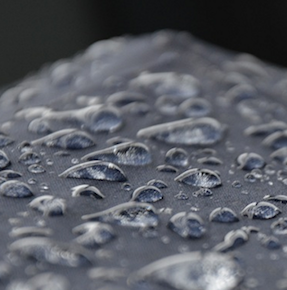
Ecor pro experts in dehumidification for over 40 years
Whether its designing home dehumidifiers or commercial grade dehumidifiers, we have it covered.
What is the difference between Domestic Grade & Commercial Grade?
There is often a note in the user manual of domestic or home dehumidifiers “Do not use unattended”. This is there because the dehumidifier was never designed to be used for long periods of time. With any appliance there is safety issue.
In the past 6 years, 8 million compressor or refrigerant dehumidifiers have had to be recalled from the US and European markets due to safety issues. Those safety issues were extreme enough to pose a fire risk. Generally a home dehumidifier is traditionally a plastic box with a compressor that itself heats or in a desiccant dehumidifier a heater element inside that of course heats. Both use mains electricity and both rely on many electric & electronic components to function in order for the dehumidifiers to remain safe. Should one of these components fail then the safety of the dehumidifier is compromised sometimes with grave consequences.
Ecor Pro dehumidifiers have triple safety. Even our PTC heater desiccant models have over heat protectors. Our models have triple safety above the norm and above most other suppliers. Ecor Pro recommends that for all day use, commercial grade models are used.
Why do normal dehumidifiers tend to have electronic controls and commercial models use manual controls?
Electronic controls are often cheaper to manufacture than manual controls these days. Manual controls however tend to be more reliable and more accurate over time. Electronic components are often ironically affected by humidity. They are often affected by power surges also which can reset the controls.
Electronic controls also have a peculiarity. That is when the power supply is interrupted they will reset to a default position which is often in the “off” position. Commercial units are usually unaffected by power surges so continue working normally after surges and power outs. This is common for some places and often areas that are working off the grid power supplies for instance.
All Ecor Pro commercial grade units have manual humidistat control.
Do I need a timer on my dehumidifier?
Generally you do not as the dehumidifier is regulated by the units humidistat. Turning the dehumidifier off can mean humidity actually rises over time.
See more here
Summary of Desiccant & Refrigerant Dehumidifiers
Each type of technology has advantages. Refrigerant (or compressor) dehumidifiers work by creating a cold surface. When warm, damp air comes into contact with the cold surface, condensation forms and drips into the water tank. They’re generally only effective in a heated room in the house because, if the temperature drops too low, the coils inside them can freeze over. They also perform very poorly in normal home temperatures. Desiccant dehumidifiers use an adsorbent material to extract water from the air. You can think of them as a sponge for the air that when heated dries quickly.
Desiccant dehumidifiers will often work more effectively than refrigerant dehumidifiers in colder temperatures but are not limited only to colder temperatures. Ecor pro dehumidifiers have been used in tropical environments too. If you’re looking for a dehumidifier for an unheated garage, conservatory or other out-building, you should generally opt for a desiccant.
If you need to operate the dehumidifier all day and every day then commercial grade is needed.
Take into consideration that two different dehumidifiers with the same quoted capacity could vary enormously in performance. The way desiccant dehumidifiers are classified is in the same way as refrigerant units and at the same conditions usually. What should be the key measure is the cost to extract a certain amount of water.
